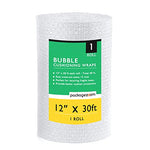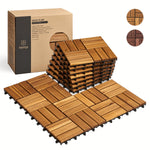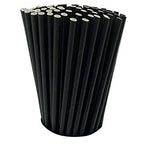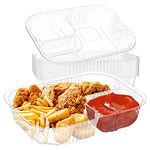You have no items in your shopping cart.
When it comes to maintaining a beautiful and well-manicured yard, one of the key challenges is managing the waste generated from pruning, trimming, and raking. While there are various options available for disposing of yard waste, paper yard waste bags have emerged as a popular and environmentally-friendly choice. In this comprehensive guide, we will delve into the world of paper yard waste bags, exploring their benefits, uses, and tips for effective utilization. So, if you're looking for a sustainable and convenient solution for managing your yard waste, keep reading!
Paper Yard Waste Bags: An Eco-Friendly Solution
What are Paper Yard Waste Bags?
Paper yard waste bags are biodegradable and compostable bags designed specifically for collecting and disposing of yard waste such as grass clippings, leaves, branches, and other organic materials. Made from sturdy and tear-resistant paper, these bags provide a reliable and environmentally-conscious alternative to plastic bags.
Why Choose Paper Yard Waste Bags?
Paper yard waste bags offer several advantages over traditional plastic bags, making them a preferred choice for eco-conscious homeowners and gardeners:
- Biodegradability: Unlike plastic bags that can persist in landfills for hundreds of years, paper yard waste bags decompose naturally, reducing the environmental impact.
- Compostable: These bags can be safely added to compost piles or municipal composting programs, contributing to the creation of nutrient-rich soil.
- Sturdiness: Paper yard waste bags are designed to withstand the rigors of outdoor use, ensuring they can handle the weight and sharp edges of yard waste without tearing.
- Breathability: The porous nature of paper allows air circulation, preventing the accumulation of moisture and reducing the risk of mold or odors.
- Convenience: Paper yard waste bags are easy to handle and transport, often featuring handles or reinforced bottoms for added durability.
- Regulations and Compliance: In some areas, local regulations require the use of paper yard waste bags for curbside collection, making them a necessity for proper waste management.
Choosing the Right Paper Yard Waste Bags
Size Matters: Finding the Perfect Fit
When selecting paper yard waste bags, it's important to consider the size that best suits your needs. Bags typically come in various capacities ranging from 30 to 50 gallons. Assess the volume of yard waste you generate to determine the appropriate size. It's better to have a slightly larger bag to accommodate unexpected surges in waste.
Durability: Going the Extra Mile
To ensure your paper yard waste bags can withstand the demanding nature of yard work, opt for bags made from heavy-duty kraft paper or those reinforced with a plastic lining. These added layers of strength enhance tear resistance and prevent moisture absorption, prolonging the life of the bag.
Eco-Certifications: Making Informed Choices
Look for paper yard waste bags that carry eco-certifications such as the Forest Stewardship Council (FSC) label. These certifications guarantee that the paper used in the bags is sourced sustainably from responsibly managed forests. By choosing certified bags, you contribute to the preservation of natural resources.
Cost Considerations: Balancing Quality and Affordability
While paper yard waste bags may cost slightly more than their plastic counterparts, the long-term benefits and positive environmental impact outweigh the price difference. Consider it an investment in the health of your yard and the planet.
Effective Utilization of Paper Yard Waste Bags
Bagging Techniques for Optimal Use
To make the most of your paper yard waste bags, follow these techniques for efficient and effective bagging:
- Layering Technique: Layering your yard waste inside the bag helps distribute weight evenly and prevents the formation of air pockets. Begin by placing a few inches of yard waste at the bottom, then alternate with layers of leaves, grass clippings, and small branches until the bag is filled.
- Avoid Overpacking: While it may be tempting to stuff as much waste as possible into the bag, overpacking can lead to tears and difficulties in lifting or transporting. Fill the bag to a comfortable level, leaving some space for easy closure and handling.
- Secure Closure: To prevent spillage during transportation, fold or roll down the top of the bag and secure it with tape or a twist tie. Ensure the closure is tight but not overly constricted to allow for ventilation.
Storage and Transportation Tips
Proper storage and transportation are crucial to maintaining the integrity of your paper yard waste bags:
- Dry Storage: Store your paper yard waste bags in a dry area, such as a garage or shed, to prevent moisture absorption. Exposure to moisture can weaken the bag and compromise its structural integrity.
- Avoid Punctures: Keep your paper yard waste bags away from sharp objects or tools that may puncture or tear the bag. Store them in a designated area away from potential hazards.
- Safe Lifting: When lifting heavy bags, remember to practice proper lifting techniques to avoid strain or injury. Bend at the knees, keep your back straight, and lift with your legs.
FAQs about Paper Yard Waste Bags
1. Are paper yard waste bags more expensive than plastic bags?
No, paper yard waste bags are typically slightly more expensive than plastic bags, but the added cost is justified by their eco-friendly nature and superior durability. The long-term benefits of paper bags outweigh the minimal price difference.
2. Can paper yard waste bags be used for wet yard waste?
While paper yard waste bags are designed to be moisture-resistant, it is advisable to avoid filling them with wet or saturated yard waste. Excess moisture can compromise the bag's structural integrity and make it difficult to handle.
3. Can I recycle paper yard waste bags?
Most paper yard waste bags can be recycled along with other paper products. However, check with your local recycling facility to ensure they accept paper bags. If recycling is not an option, these bags can be safely composted or disposed of in yard waste collection programs.
4. How long does it take for paper yard waste bags to decompose?
Paper yard waste bags decompose relatively quickly compared to plastic bags. Depending on various factors such as temperature, humidity, and microbial activity, paper bags can break down within a few months to a year.
5. Are paper yard waste bags suitable for large yard projects?
Yes, paper yard waste bags come in various sizes, including larger capacities of up to 50 gallons. These larger bags are well-suited for extensive yard projects, accommodating a significant volume of waste.
6. Can I reuse paper yard waste bags?
While paper yard waste bags are primarily designed for single-use, they can be reused if they remain intact and free from contamination. After use, simply empty the bag, clean it, and allow it to dry before the next use.
Conclusion
Paper yard waste bags offer a sustainable and practical solution for managing yard waste while minimizing the environmental impact. With their biodegradable nature, sturdy construction, and ease of use, these bags are an excellent choice for homeowners and gardeners alike. By making a conscious decision to switch to paper yard waste bags, you contribute to the preservation of our planet's resources while maintaining a clean and beautiful yard. So, say goodbye to plastic and embrace the eco-friendly benefits of paper yard waste bags!








